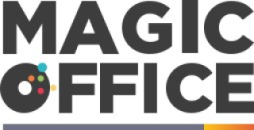
Understanding the Role of Planner Boards in Modern Offices
Boosting Operational Flow with Planner Boards
In today's fast-paced business environment, planner boards are emerging as essential tools for maintaining a productive workflow. Their strategic role in modern offices cannot be overstated, serving as central command centers for scheduling, task management, and communication. One of the primary advantages of planner boards is their ability to visually map out tasks and timelines, a feature that enhances clarity and coordination among team members. The planner board also acts as a visual cue, reducing the reliance on digital notifications which often contribute to information overload. Whether you're employing simple whiteboards or opting for more advanced magnetic or glass options, the goal is to facilitate seamless information sharing. By placing these boards in a prominent area within the office, you create a dynamic space where ideas can be democratically pitched, updated, and displayed for all to see. Moreover, integrating planner boards offers a tangible approach to project tracking, minimizing the chance of missing deadlines. Teams can easily adjust schedules, visualizing project dependencies and resource allocation. For office managers in New Zealand, understanding these aspects of planner boards becomes crucial in empowering their teams to excel in organizational tasks. Implementing the right planner board can significantly improve overall productivity, acting as a physical communication hub. In such a way, planner boards foster an environment that promotes transparency and accountability, ultimately leading to optimized workforce management in pursuit of enhancing productivity in the workplace. For more on optimized management solutions, consider discovering how Premier Health’s time and attendance solutions contribute to operational efficiency.Adapting Planner Boards to New Zealand's Unique Business Culture
Integrating Planner Boards into New Zealand’s Business Environment
Embracing planner boards within the unique cultural landscape of New Zealand’s business environment requires a tailored approach. New Zealand businesses thrive on their distinct mix of entrepreneurship, collaboration, and community focus. Hence, the integration of planner boards should align with these values to ensure ease of adoption and maximum impact.
Incorporate local nuances in communication and problem-solving to fully leverage planner boards. For instance, discussing plans using visual aids such as planner boards can facilitate better understanding and decision-making among diverse teams. Adapting boards, especially in industries like fishing and maritime, ensures attention to detail and accuracy.
Meeting Business Needs with Customized Planning Tools
New Zealand’s diverse industries—from tech startups to fishing enterprises—call for customized planner boards that cater to specific needs. For instance, a fishing company might benefit from a supply chain KPI dashboard embedded into their planner board system to track boat logistics and shore tackle operations.
Consider the use of various planner board types, like the mag planer or side planer, to suit different business sectors. Some companies may require lightweight and portable options, like mini planers, enabling flexible use across various locations or during field activities. Others may need to incorporate tattle flags, ensuring attention to detail in project management practices.
Value-Driven Choices for Planner Board Options
Ensuring cost-efficiency while maintaining high functionality is vital. Evaluate options based on features like replacement parts, release clips, and flag systems to ensure longevity and maintenance ease. When choosing boards, consider the product’s price-to-performance ratio, especially when sourcing from local suppliers or tackle shops known for quality items like church tackle or walleye boards.
Ultimately, integrating planner boards effectively into your business not only aligns with New Zealand’s business values but also enhances productivity and organizational harmony.
Choosing the Right Planner Board for Your Office Needs
Identifying the Perfect Planner for Your Office Environment
Selecting the appropriate planner board for an office in New Zealand requires a discerning eye, given its unique business culture. Identifying the right tool can enhance productivity, ensuring that the office workflow remains smooth and efficient. One of the primary factors to consider when choosing a planner board is its size and weight. A board lightweight product is often preferred to facilitate easy installation and portability. Consider how the planner will be mounted or if it will need to be moved frequently. Here's a look at some types and features to consider:- Inline Planner and Side Planner Boards: These are great for offices that thrive on visual management techniques. Inline planers can be used in smaller spaces due to their compact nature, whereas side planers provide ample space for broader planning needs.
- Addition of Accessories: Certain planner boards come with accessory packs like tattle flags and release clips which can signal task completions or high-priority items. This functionality is common in fishing and trolling setups but can be creatively adopted for office environments.
- Durability: Wood or high-quality plastic boards may have a higher initial cost but offer longevity and a better return on investment. Assess the planner board's ability to withstand the rigors of its planned use, such as the constant updating or moving around the office.
- Budget Considerations: Prioritize a planner board that fits within the office’s budget without compromising on the required features. Keep an eye out for special prices, product deals, or shop sales from reputable tackle shops that offer quality and value.
Implementing Planner Boards for Maximum Efficiency
Steps to Incorporate Planner Boards for a Productive Workspace
Integrating planner boards effectively into your office environment requires careful planning and execution. Here are some steps to help you make the most out of these tools for maximum efficiency:
- Identify Your Workspace Needs: Before setting up planner boards, assess your office's specific needs. Understanding whether you need compact options like a mini planer or larger magnum mini configurations can save you time and resources. Consider the kind of tasks your team handles regularly and the communication style within your organization. This assessment will guide your choice of the right size, design, and structure of the planner board.
- Placement of Boards: The location of your planner board is crucial for its effectiveness. They should be visible to all team members involved in the task. For instance, an inline planer board could work well in narrow spaces, while a larger board lightweight option is suitable for more expansive areas. Ensure the board is at an accessible height, and nothing obstructs the view. Accessibility enhances interaction and the board’s utility.
- Customizing the Board's Features: Utilize planner board features judiciously. Implement a system of release clips or tattle flags for task signals, or opt for a board with a flag system to enhance communication. Customizing your planner board with color-coded sections or a yellow side planer provides clear categorization, allowing team members to follow updates easily.
- Training and Engagement: Introduce the board's functionality through comprehensive training sessions. Foster an environment where team members comfortably use and contribute to the information on these boards. This includes knowing when to adjust a shore tackle or afix fishing planer if needed. Regular training and engagement with the planner board help inculcate the habit of consistent updates and task tracking.
- Maintenance and Upkeep: Just like a tackle shop keeps its supplies in order, maintaining planner boards is crucial for ongoing effectiveness. Regularly wipe the board clean, check for replacement parts like a pro ring or securer clips, and ensure the board trolling mechanisms are functioning without hitches. A clean, well-maintained planner board signals an organized and professional environment.
Incorporating these practices will enhance communication, clarity, and efficiency in your New Zealand office, enabling your team to manage tasks effectively and maximize productivity.
Overcoming Common Challenges with Planner Boards
Identifying and Addressing Common Hurdles
Planning boards have transformed modern office management, but their implementation can present a few challenges that need careful consideration. Let's delve into some common issues and solutions to help streamline the process, making these versatile tools work for you.- Space Constraints: Often, the physical size of planer boards may not align with the available surface area in busy office environments. Opt for mini planer options or magnum mini products that retain full functionality while occupying less space.
- Team Adoption: Securing buy-in from team members and encouraging consistent use can be challenging. One effective method is to involve staff in the decision-making process, perhaps by sharing an exploratory session at a local tackle shop to view different board types. This boosts enthusiasm and serves as an educational experience.
- Maintenance and Repairs: Over time, repair requirements such as replacing parts or release clips can arise. To minimize disruption, it's wise to stock up on replacement parts like the flag system and mag planer components. Keeping these in a dedicated supply pack ensures repairs are swift and your planer board remains operational.
- Customizing to Specific Needs: Planers and boards come in varying specifications tailored for distinct purposes such as fishing or even trolling scenarios. For example, if your focus is project management, board trolling configurations might be more pertinent. Consider inline planer models, which emphasize ease of use and adaptability.
Future Trends in Planner Boards and Office Management
Emerging Innovations and Trends in Planner Board Management
In the ever-evolving landscape of office management, planner boards continue to adapt and innovate, aligning with broader technological advancements and workplace dynamics. Here are some key trends:- Digital Integration: As digital tools become more prevalent, integrating traditional planner boards with digital platforms becomes essential. This ensures fluidity between physical and digital organizational methods, enhancing overall productivity.
- Customized Solutions: Businesses are increasingly seeking planner boards that offer tailored features to meet specific operational needs. Boards equipped with customizable sections allow for greater flexibility, accommodating varied planning requirements.
- Sustainable Materials: With a growing focus on sustainability, companies are prioritizing planner products made from eco-friendly resources. This not only reflects corporate responsibility but also resonates with environmentally conscious employees and clients.
- Innovative Features: Features such as the tattle flag system and lightweight mag planer design can optimize efficiency for various tasks, from traditional office planning to usage in industries like fishing, where tools like the church tackle side planer prove invaluable.
- Collaborative Tools: Enhanced collaboration is facilitated by planner boards designed for interactive sessions, encouraging team contributions. These boards often come equipped with options like release clips and mini planer attachments to support diverse usage scenarios.
- Versatile Formats: From large office planner boards to compact and portable versions like the pack-friendly magnum mini, versatility is crucial. Whether you are on a boat or in a shore tackle shop, having a flexible planning tool remains a top priority.












